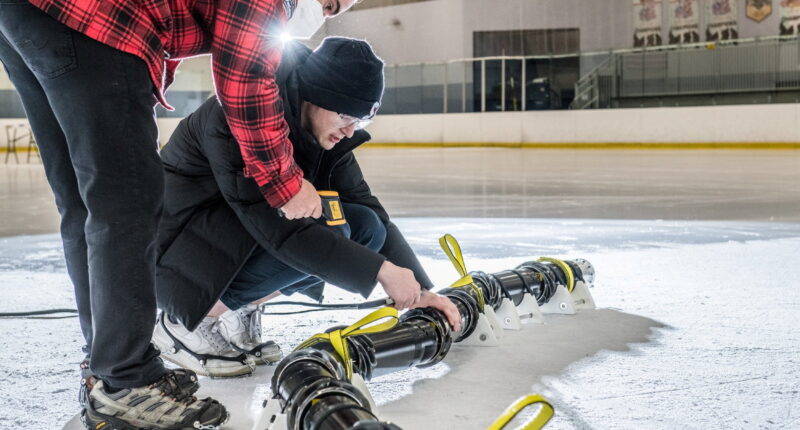SCIENTISTS have revealed plans to send a robot snake to search for life on Saturn’s Moon.
Dubbed Exobiology Extant Life Surveyor (EELS), the system is being developed in Nasa’s Jet Propulsion Laboratory (JPL) at CalTech.
Researchers revealed the elongated robot would slither along otherworldly terrains via spinning wheels along its body.
Its main goal is to explore vent systems on the small icy moon of Saturn called Enceladus.
However, EELS could also be used on Earth to navigate tricky environments.
Why Enceladus?
NASA’s Cassini spacecraft data suggest that Enceladus has a liquid ocean under its icy crust.
The plumes erupting there may also be the result of liquid water, potentially making this the easiest path to finding a habitable liquid ocean.
And EELS, unlike a rover, would be able to investigate such scenarios by crawling down crevasses and swimming through water.
The system uses “first-of-a-kind rotating propulsion units” that act as tracks, gripping mechanisms, and propeller units underwater.
In turn, this enables the robot to access a plume vent exit and follow it to its ocean source.
Most read in News Tech
Project Manager Dr. Martin Robinson says the goal is a platform that could explore anywhere, even venturing down lava tubes on the Moon.
The adaptability of the system opens other destinations such as Martian polar caps, and descending crevasses in ice sheets on Earth.
JPL explains: “The current effort includes working with earth scientists to identify high-priority, high-impact terrestrial scientific investigations that will also demonstrate the capabilities of EELS in a planetary analog environment.”
Tests have so far been conducted inside Canada’s Athabasca Glacier and Mount Meager volcano.
“Although the EELS concept was initially inspired by the vents on Saturn’s moon Enceladus, its versatility and machine intelligence could eventually be used for exploring many unvisited planetary destinations as well as on Earth,” said JPL spokesperson Melissa Pamer.
“It’s a versatile, highly intelligent, and super awesome snake robot,” Dr. Hiro Ono, Principal Investigator at JPL, emphasized.
“What could be greater than potentially detecting life? To know that we aren’t alone,” Dr. Robinson echoed.










